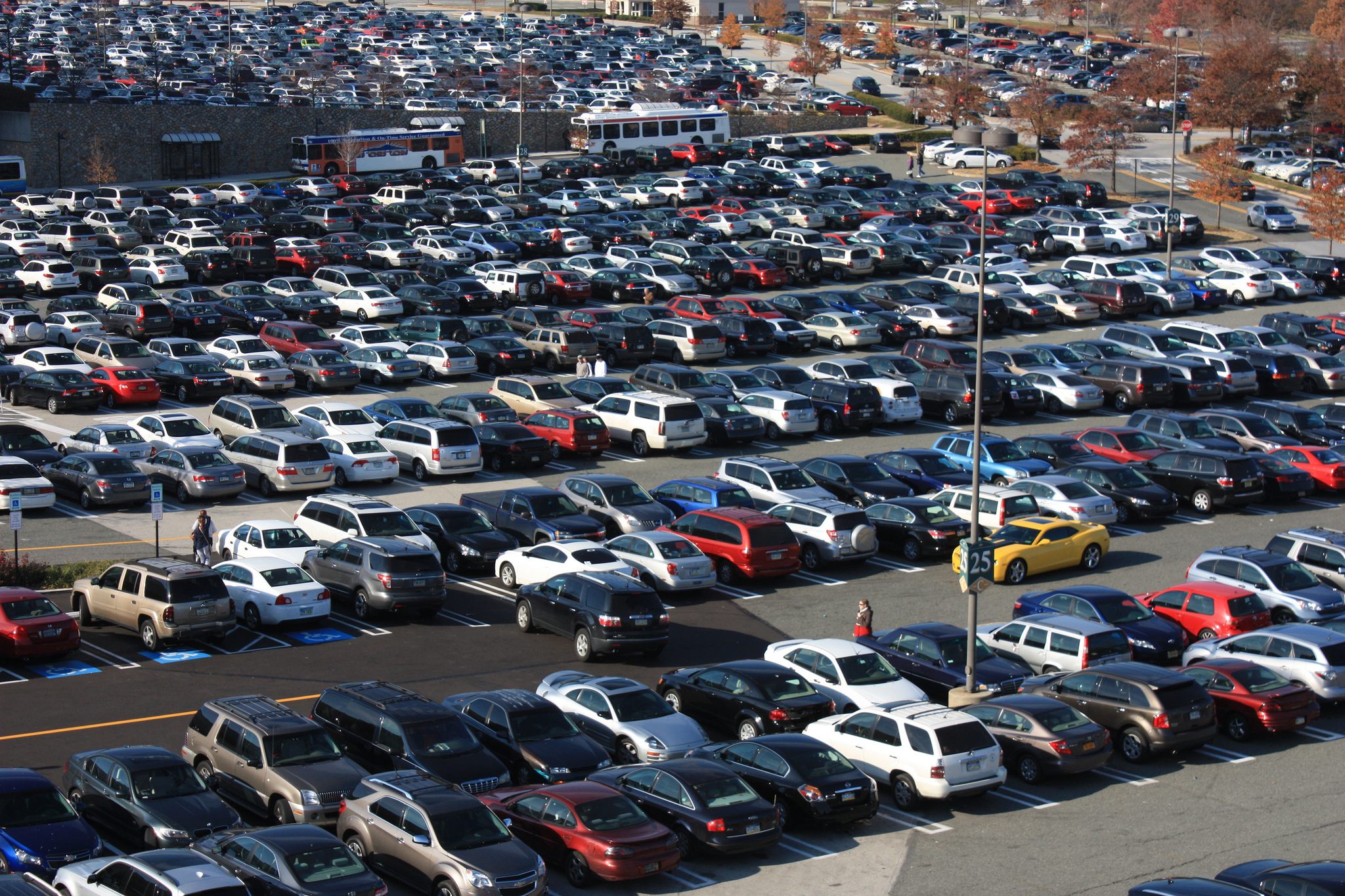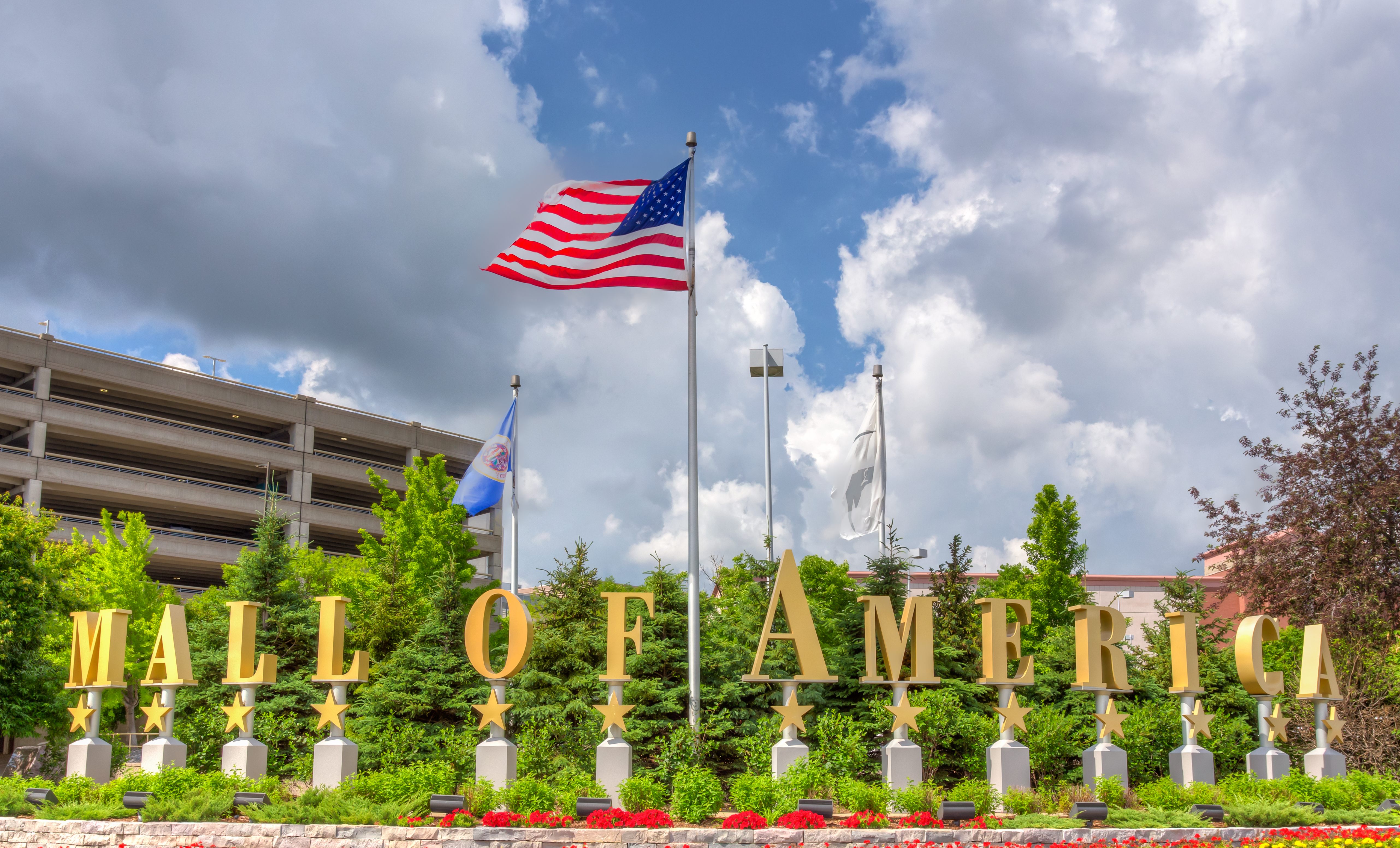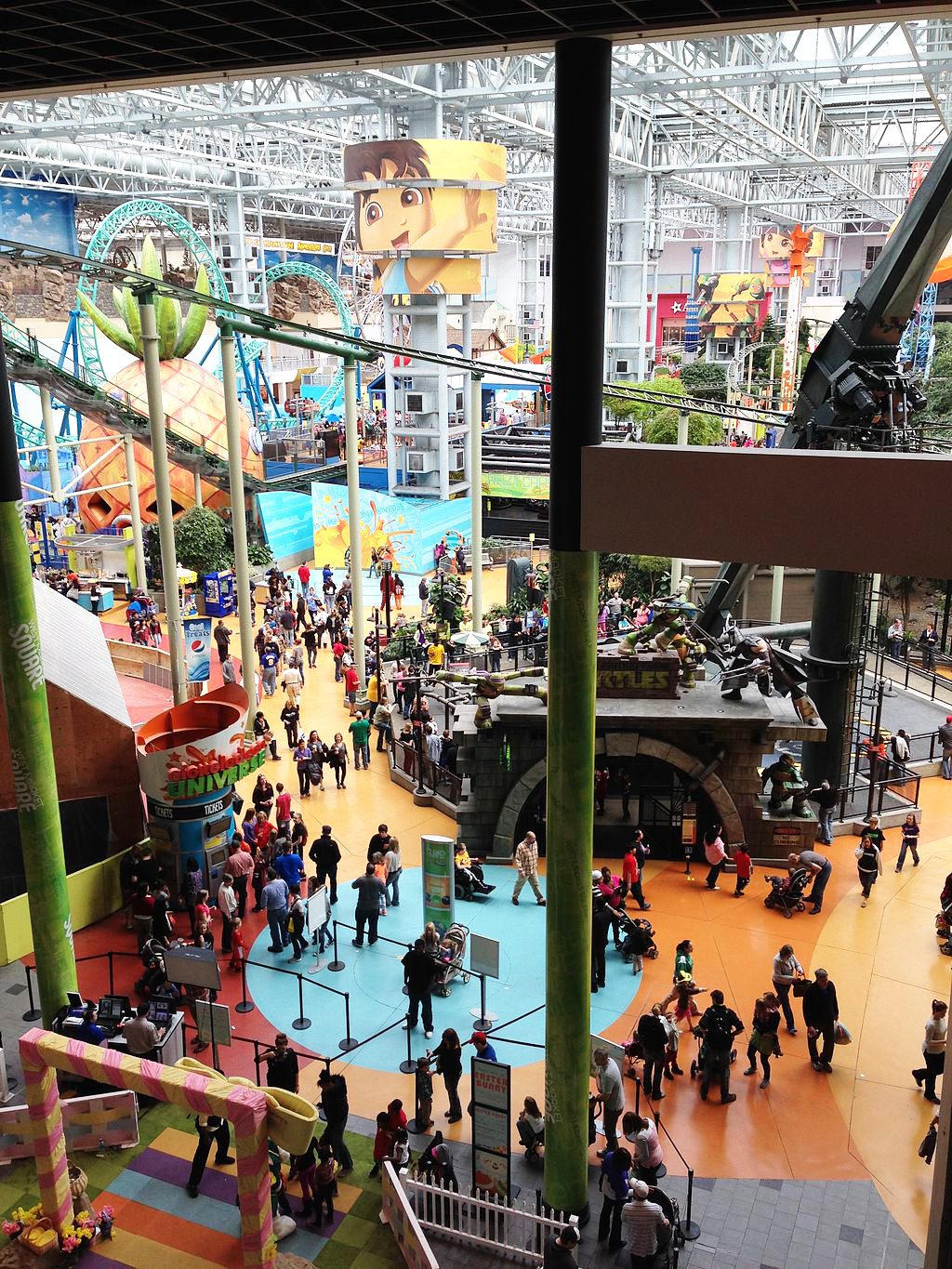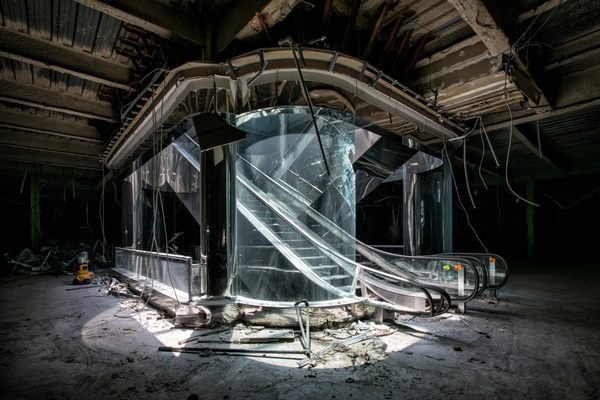The Battle For The Crown Of America’s Best Shopping Mall

A parking lot at King of Prussia mall. (Photo: Montgomery County Planning Commission/Flickr)
It’s one thing to be the biggest mall. What about being the best mall?
On the popular online forum City Data, multiple threads, with reams of comments, exist to debate two of the nation’s largest indoor shopping structures, Mall of America, in suburban Minneapolis-St. Paul and the King of Prussia Mall, in suburban Philadelphia. Long and sometimes fiery arguments break out on the site, involving hometown pride, comfort, ethnography, and the Sunglass Hut.
“KoP has more of a luxury feel, like it was built just to serve all the bored Main Line housewives,” writes one commenter, of the King of Prussia.

A Mall of America supporter rejoins: “I think MoA is a better ‘entertainment’ destination since it offers more than just shopping with its amusement park, mini-golf course, aquarium, etc.”
The emotion behind the debate is surprising, given that most hometown malls are now anonymous-looking buildings filled with the same glossy chain stores. Yet for some reason, Americans still identify with their local mall. They defend it. The size of the Mall of America and the King of Prussia Mall raises the stakes—can we learn something from the vastly different value systems embedded in these two behemoths’ design? What does being the “best” mall even mean these days, as malls themselves seem like ’80s relics? Time to enter the shopping domes.

Mall of America interior. (Photo: Matt/Flickr)
Like we’ve seen with the debates over where the geographic center of the U.S. is, or the hottest place on Earth, even simple-seeming measurements can be complex. The fight over the title of “largest mall” comes down to what should be the simplest kind of metric: square footage. On Wikipedia, entries for both the King of Prussia Mall and the Mall of America have size boasts in the “General Information” box, right at the top of the page. But they use different units of measurement, no doubt to make each mall appear bigger than the other. The Mall of America lists its “floor area” as 2.5 million square feet. The King of Prussia mall lists its “total retail floor area” as 2.391 million square feet.
Each calculation is true; the Mall of America is indeed the biggest mall in terms of total square footage, and the King of Prussia Mall is indeed the biggest in terms of space dedicated to retail. It is an absurd argument, one argued relentlessly and pointlessly by those dedicated to their own local retail experience. (It is especially flawed because the West Edmonton Mall, in Alberta, Canada, is significantly larger in both categories.)

A roundabout at the Mall of America. (Photo: Ken Wolter/Shutterstock.com)
The Mall of America is newish, only opened in 1992, and has a consistent and sensible floor plan. It is basically a rectangle, with shops along the edges, and big department stores in the corners. The center is home to Nickelodeon Universe, a theme park complete with roller coasters, mini-golf, and an entire aquarium.
It’s located shrewdly in a suburb with extremely cheap rent, but easy access through bus and light rail to a metropolitan area of nearly 4 million people. No disrespect to Minneapolis-St. Paul, but it is an area where a gigantic mall can dominate tourist activities.
The Mall of America, according to its website, attracts some 40 million visitors each year, of whom about 16 million are tourists coming from outside the Twin Cities. It’s huge and airy, with an absurd eight acres of skylights. In a lot of ways, it doesn’t feel much like a mall at all. It embraces its status as a hub of attractions, hosting live music, comedy, and a huge interactive Lego store in addition to its better-known amusement park.
The King of Prussia Mall has a very different story. “It was originally smaller, built in 1963 as an open-air center,” said Lyndsay Rossman, director of global tourism marketing for Simon, the company that owns the mall. “We’re currently in our eighth major renovation, which includes expansion efforts.”
The King of Prussia Mall predated the mall boom of the 1980s, and outlasted almost all of them. The design is a totally senseless mishmash, comprised of multiple enormous buildings haphazardly connected by tunnels, outdoor walkways, or sometimes by nothing at all. Seen from above, the mall has no recognizable shape, but once inside, it goes on for miles, staying exactly the same. Like a casino, it seems smallish and manageable, with small hallways and relatively low ceilings, but once you want to leave, it is nearly impossible to find your way out.

King of Prussia Mall, seen from above. (Photo: NASA/Wiki Commons)
It is a chimera of a mall, with wings slapped onto main buildings, and parking lots surrounding it like a moat. Stores repeat themselves because it takes so long to get from one end to the other. Yet bizarrely, customers and company representatives like to boast that the King of Prussia is a purer capitalist experience than the Mall of America.
“The property has really gained international attention and recognition because of its size, but also because of the experience it offers to someone who’s looking for a serious shopping experience,” said Rossman.
This is the refrain across the internet: the King of Prussia is for shoppers, serious shoppers, who don’t need any distractions from their shopping. No attractions, no aquariums, no nonsense: this is the real deal. If you can’t handle it, go to the Mall of America.
Unbeknownst to their defenders, the differences between the two mega-malls are becoming less and less pronounced. The Mall of America will soon enter the stage that the King of Prussia has long occupied, one of a disorganized, imperfect money-spending experience. The ominously named “Phase II” will attach a huge irregular piece to the calmly-laid out rectangle, adding a water park, office towers, an Ikea, a movie theater, and a museum.
Nobody really knows if the mall as a concept will survive the threats of economic collapse and the dominance of online commerce. The American shopping mall is dead, says the Guardian. The American shopping mall is experiencing a rebirth, says CNBC. But both the King of Prussia and the Mall of America are expanding right now, thriving despite the threats of online shopping and a global economic collapse. They will not die. They are America’s malls.

A massive recreation area at the Mall of America. (Photo: Runner1928/WikiCommons CC BY-SA 3.0)







Follow us on Twitter to get the latest on the world's hidden wonders.
Like us on Facebook to get the latest on the world's hidden wonders.
Follow us on Twitter Like us on Facebook